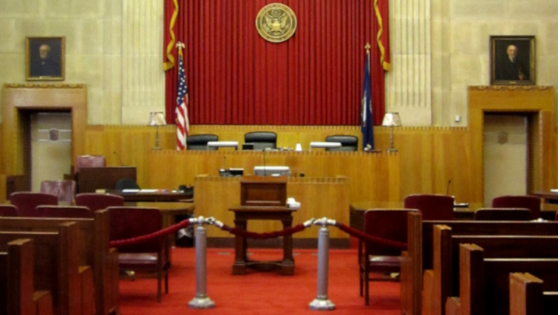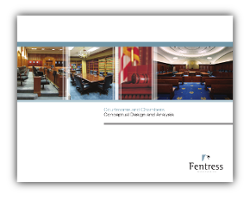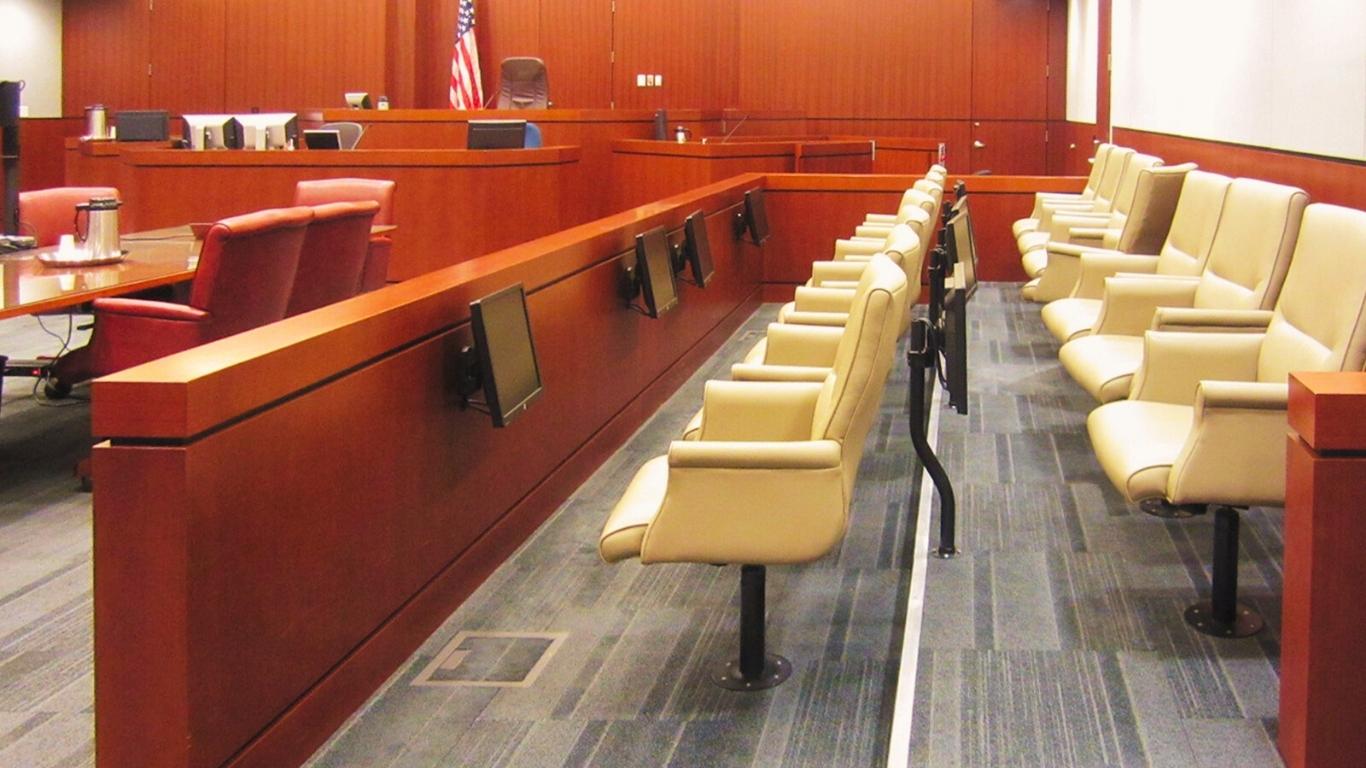Having a courtroom layout that provides sufficient space for each type of user is critical. The courtroom is the location where three separate circulation zones intersect: public circulation for spectators, family members, and litigators; restricted circulation for the judge, court staff, and jury; and secure circulation for prisoners. A courtroom needs an adequate amount of space for these zones to fully support court proceedings and to ensure the safety of all participants.
What can be done when the ideal amount of space does not exist, or if changing needs of various court proceedings require various layouts? Though each courthouse and courtroom demand unique solutions, we have developed a framework to assist in designing functional courtrooms in substandard space, or for providing maximum flexibility for changing needs.
Fitting a Courtroom into Existing Space
A common challenge when undergoing major renovation projects in existing courthouses is designing a functional courtroom in tight or poorly configured space. We often refer to this as “shoehorning” a courtroom into the space. In many cases, adequate space cannot be found to construct a courtroom that meets full design standards. Other common issues include narrowly spaced or irregular perimeter walls and/or column spans that are too short.
Let’s consider flexible courtroom furniture and fixtures. In most traditional courtrooms, much of the courtroom furniture – such as the judge’s bench, jury box, witness stand, railing, and spectator seating - is fixed. In these cases, only the movable pieces (which are often limited to the attorney tables/chairs, lectern, and evidence presentation equipment) can be rearranged to support the proceeding. In an undersized courtroom, fixed courtroom furniture can limit the functionality of court proceedings. By contrast, when freestanding courtroom furniture is used, the furniture throughout the courtroom can be “tightened up” to make room for adequate circulation and to fit the proceeding as needed. In some cases, reducing the size of some furniture components, such as attorney tables or the lectern, can also help free up space.
I have seen jury boxes and witness stands that can be reduced in size or removed from the courtroom to fit the proceeding. Another strategy is to arrange the attorney tables in an L-shape rather than side by side. This configuration keeps the parties separate and utilizes space opposite the jury box, which tends to be an underutilized area of the courtroom.
These solutions not only address the problem of fitting a courtroom into an existing substandard space, but can also help allow a courtroom to adapt to differing needs. Additional strategies for maximizing courtroom functionality and flexibility are explored below.
Innovative Use of Courtroom Fixtures
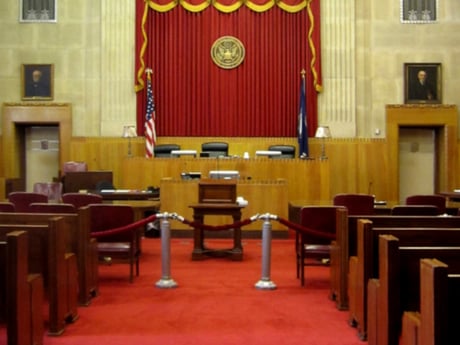
Freestanding velvet rope in courtroom
I was recently impressed by an innovative effort to use a freestanding and movable courtroom component in lieu of fixed furniture in a courthouse in Virginia. As shown in the photo above, a freestanding velvet rope supported by cast aluminum stanchions replaces the traditional fixed wood rail that generally separates the spectator area from the well. This design allows the barrier to be moved to create more space in the well or more seating for spectators as needed. Combined with freestanding spectator seating that can be easily repositioned, the courtroom can be quickly reconfigured to accommodate the unique needs of a particular proceeding.
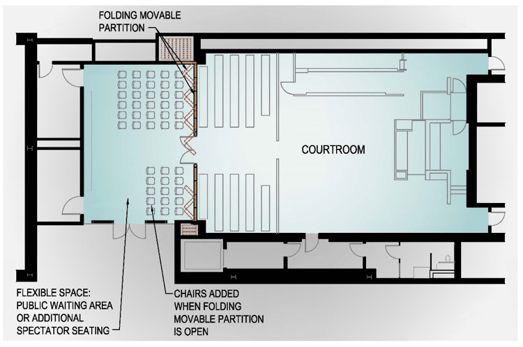
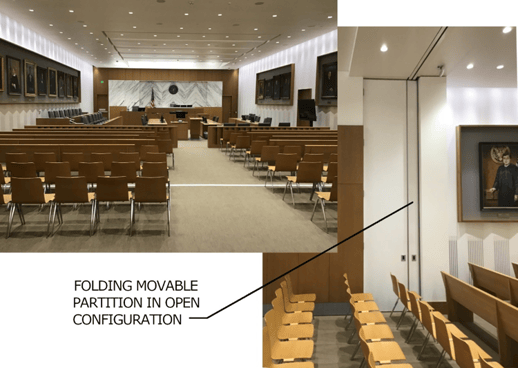
Movable wall for flexibility
I recently observed another innovative idea in courtroom flexibility when I visited a courthouse in California. The wall of the courtroom behind the spectator area was a folding movable partition. When the partition was closed, it separated the courtroom from the public waiting area. However, when the court required additional spectator seating, the partition could be opened and chairs could be added, allowing the waiting area to become part of the spectator seating.
Having flexibility in your courtroom layout can help solve some issues that go with trying to fit court proceedings around a courtroom that lacks enough space or proper proportions. Even beyond that, the ever-changing needs of various court proceedings of differing size and scope could potentially be accommodated by some or all of the strategies discussed here. One thing is for certain – the more flexibility your courtroom has, the more prepared you will be for any demands placed on it now or in the future.
__________________________________________________________
Click on the image for our guide to courtroom and chambers design.
An earlier draft of this post was published in April 2014 by a different author and has been refreshed and updated with new information.



